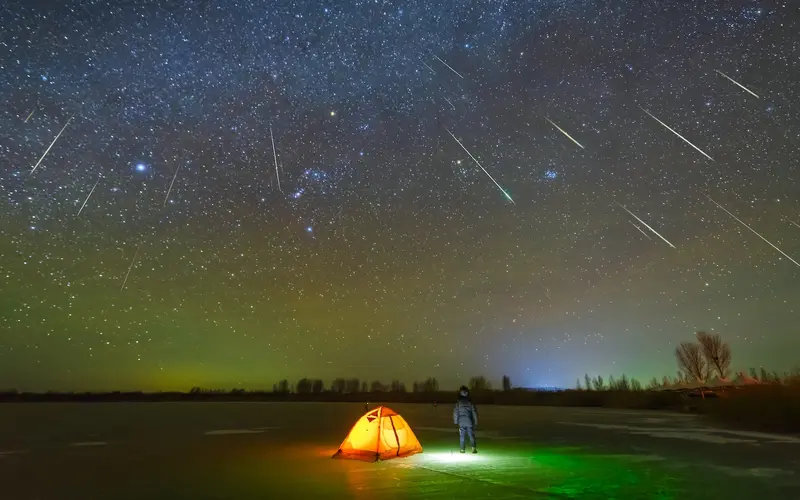The Orionids Meteor Shower: A Celestial Spectacle
Sunday, 2025/10/19236 words3 minutes1856 reads
The Orionid meteor shower, renowned as one of the most impressive displays in the celestial calendar, is poised to illuminate our night skies. This annual phenomenon will be observable until November 7, with its zenith occurring for approximately a week around October 22.
The Orionids are characterized by their luminosity and velocity, hurtling through space at a staggering 41 miles per second. These meteors emanate from the debris trail of the illustrious Halley's Comet, which only graces our vicinity roughly every 75 years. As Earth traverses this cosmic detritus, minuscule particles, comparable in size to grains of sand, incinerate upon entering our atmosphere, manifesting as streaks of light across the firmament.
For optimal viewing conditions, seek out a location devoid of light pollution after midnight, with an unobstructed view of the sky. Direct your gaze towards the constellation Orion, identifiable by its distinctive three-star belt. During the peak of the shower, observers may witness up to 15 meteors per hour, each traveling at an astonishing 148,000 mph. It's worth noting that no specialized equipment is necessary, as the shower is visible to the unaided eye.
However, potential spectators should be aware that meteorological conditions may impact visibility. The presence of low cloud cover, intermittent showers, and the possibility of thunderstorms could limit viewing opportunities. Nevertheless, with the new Moon occurring on October 21, periods of clear skies could offer excellent viewing conditions, unhindered by lunar illumination.
